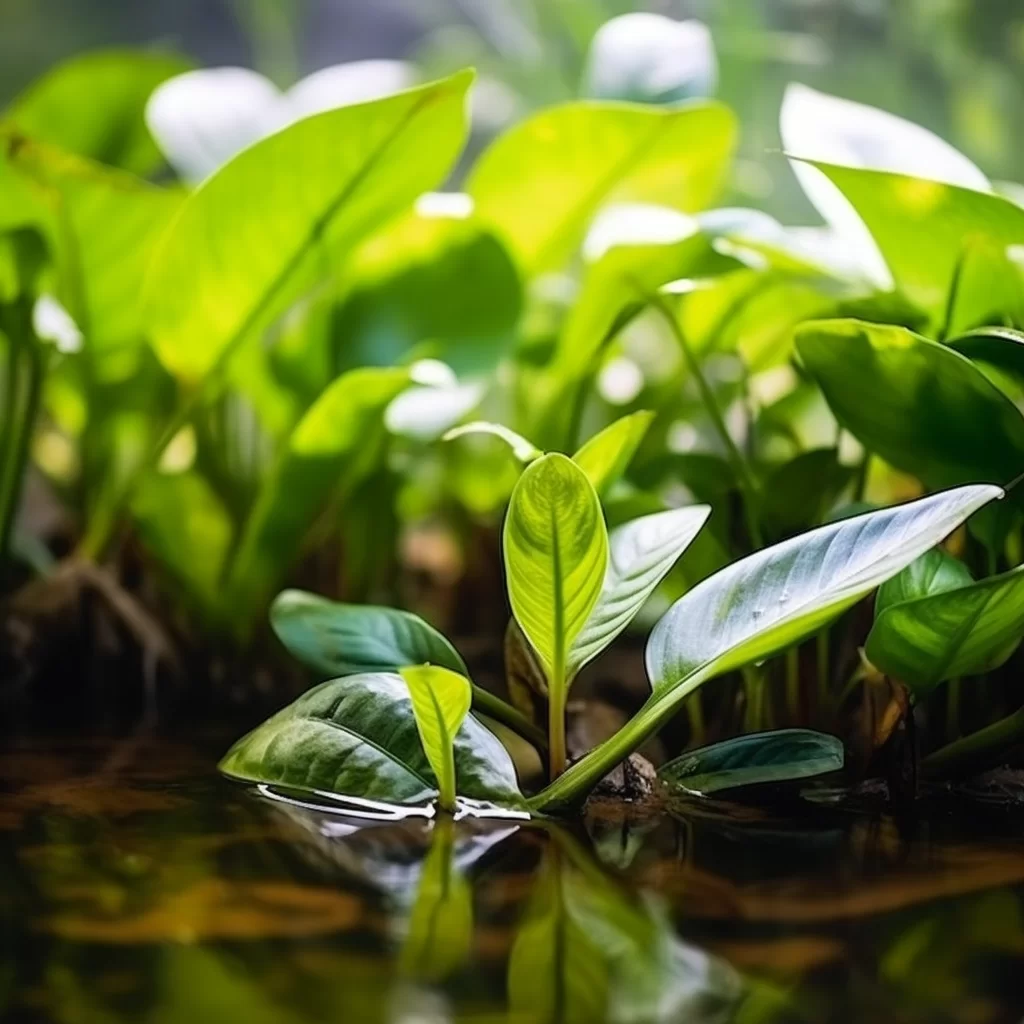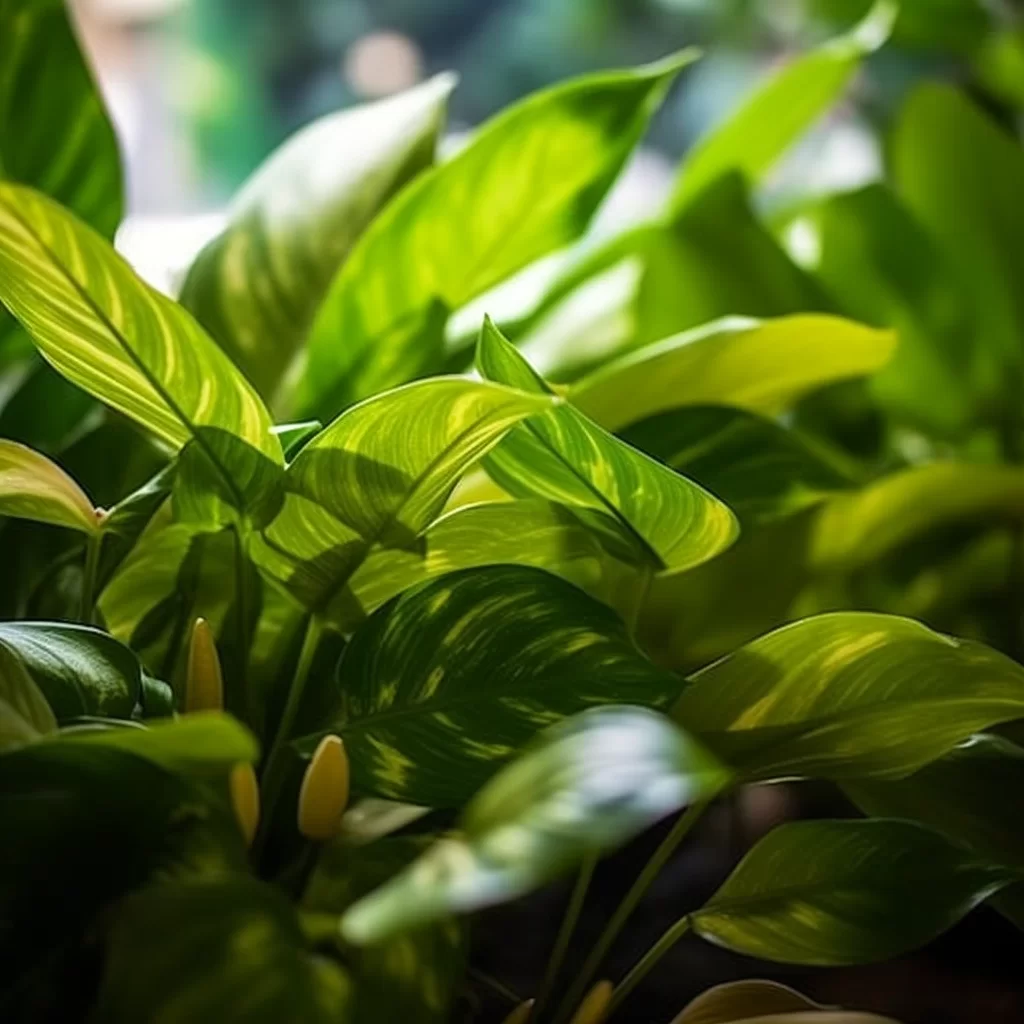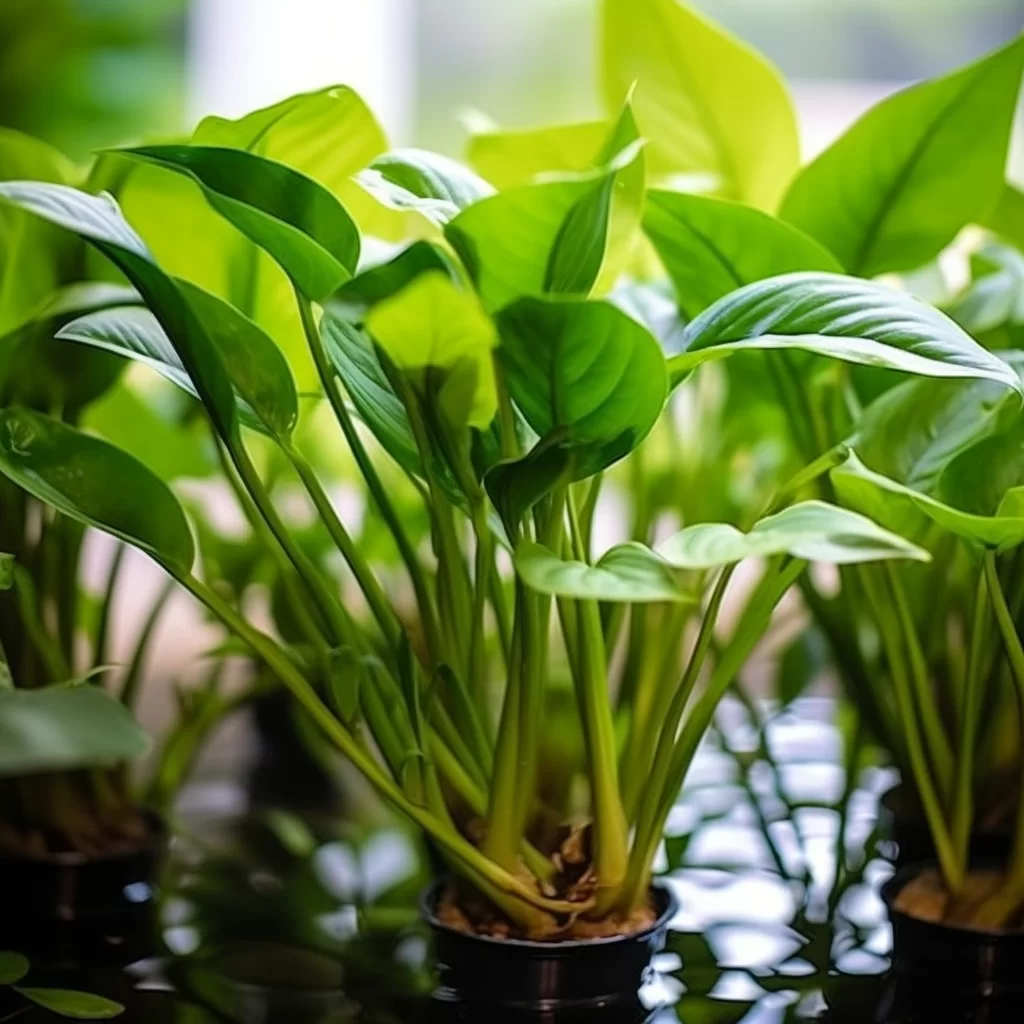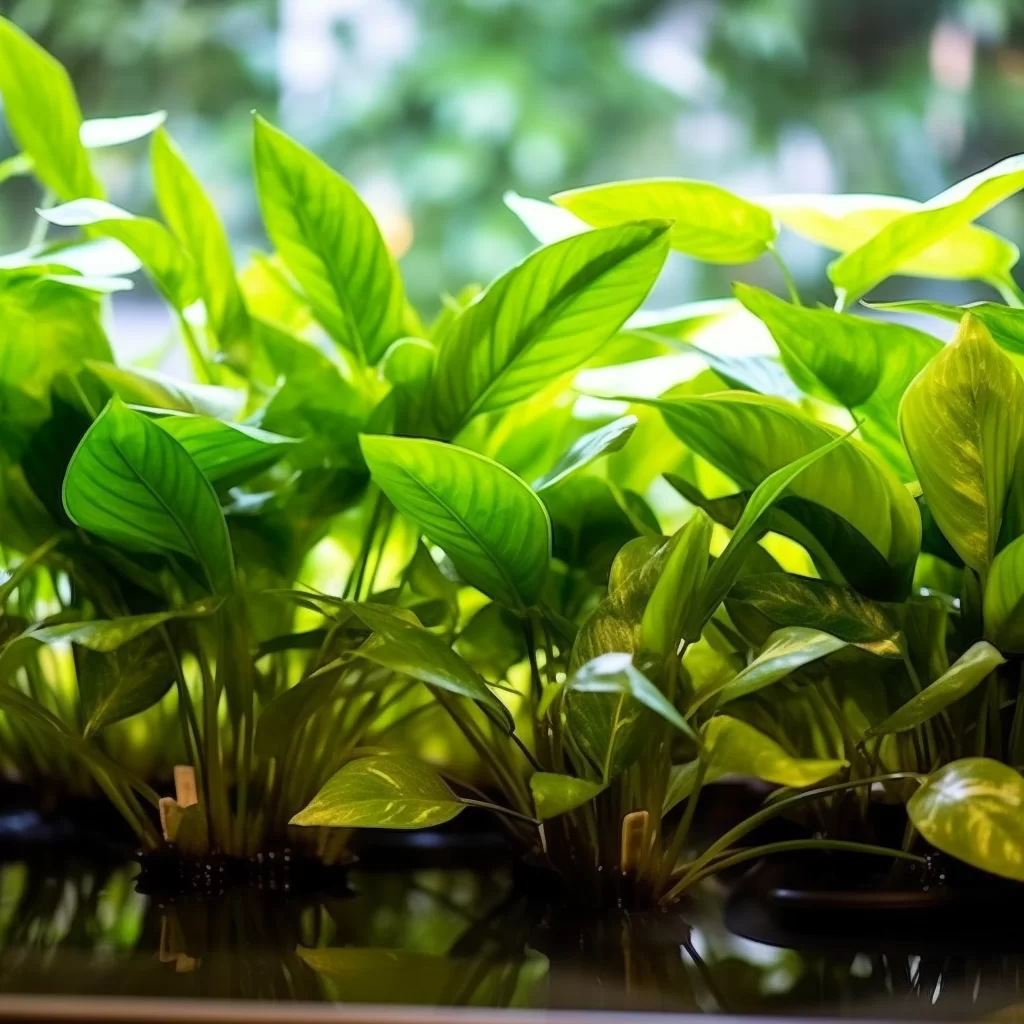Story of Day :
Contents
The Anubias Plant: A Complete Guide and Care Tips
Are you tired of struggling to keep your plants alive? Want to add a touch of lush, tropical beauty to your home or garden without the hassle? Look into getting an anubias plant! This aquatic plant is perfect for anyone looking for a low-maintenance option that still brings some greenery into their space.
Whether you’re a seasoned gardener or just starting out, this versatile plant can fit seamlessly into any environment.
In this article, we’ll provide you with all the information you need to ensure your anubias thrives and grows beautifully.Anubias plants are ideal for those who don’t have much experience caring for live plants.
They require very little attention – all they need is some water and indirect sunlight! These hardy plants can grow both above and below water, making them perfect for aquariums as well as terrariums or indoor gardens.
Plus, their unique leaf shape adds visual interest wherever they’re placed.
While they prefer warmer temperatures and regular fertilization, these needs are minimal compared to other tropical plants.
So if you want a beautiful yet easy-to-care-for addition to your space, consider getting an anubias today!
What is an Anubias Plant?
Anubias plants are a genus of aquatic plants that are native to Africa.
They have long, narrow leaves that grow in a rosette pattern and produce white flowers when they reach maturity.
There are several species of anubias plants, but the most common ones used in aquariums and water gardens are:
- Anubias barteri
- Anubias nana
- Anubias afzelii
- Anubias congensis
Caring for An Anibas Plant: Everything You Need To Know

Lighting Requirements
Taking care of your anibas plant requires you to pay attention to its lighting needs.
These plants prefer moderate lighting conditions, which means they need to be placed in a location where they can receive natural sunlight or under artificial light sources.
However, it’s important not to expose them directly under the sun as this may cause algae formation on the broad leaves.
This could lead to further complications that will hinder the growth and health of your anibas plant.In order for your anibas plant to thrive, make sure you put it in a spot with suitable lighting conditions.
If you’re keeping it indoors, place it near a window where there is ample sunlight but make sure not too much direct light hits the plant.
Alternatively, you can utilize artificial lights like LED grow lights if your home doesn’t get enough natural light for your plants’ needs.
By providing sufficient and appropriate lighting conditions for your anibas plant, you’ll be able to ensure its good health and development over time!
Water conditions refer to the physical and chemical properties of water that can have a significant impact on aquatic ecosystems.
These properties include temperature, oxygen levels, pH, nutrient content, and the presence of pollutants.
Changes in water conditions can affect the survival and growth of fish, plants, and other organisms that depend on the water for their livelihoods.
For example, high temperatures can reduce oxygen levels in water bodies which are crucial for fish respiration.
Similarly, excess nutrients from fertilizers or sewage discharge can lead to eutrophication which causes algal blooms that consume oxygen in water leading to dead zones. Water quality is essential for human health as well as ecological balance.
Water quality is essential for human health as well as ecological balance.
Therefore it is important to monitor changes in water conditions through regular testing and assessments by scientists and policymakers.
The information gained from these assessments is used to develop strategies aimed at reducing pollution inputs into aquatic systems while improving overall management practices such as land use policies or wastewater treatment plans.
Improved management practices go a long way towards ensuring clean drinking water sources while preserving healthy aquatic ecosystems that are vital for our planet’s sustainability.
When it comes to caring for fish in an aquarium, temperature is a key factor that cannot be ignored.
Different types of fish thrive in different temperature ranges, and it’s important to ensure that the water temperature is within the ideal range for their specific species.
For instance, if you’re planning on keeping your fish healthy and happy, you need to pay close attention to pH levels as well.
Most fish species do well in moderately hard water with a pH range of 6-7.5.If you want your aquatic plants and fish to flourish, then good water flow is essential as well.
Many popular aquarium species originally come from flowing streams and rivers or countless lakes with strong currents.
This makes regular water circulation critical for maintaining plant health and preventing disease outbreaks within your aquarium or tank setup.
Keeping a constant flow going not only helps oxygenate the tank but also prevents debris from settling at the bottom where it can harm delicate plants or clog filters over time!
Fertilizing is an essential aspect of gardening that involves adding nutrients to the soil to promote healthy plant growth.
Fertilizers can be either organic or synthetic, and they provide plants with essential nutrients such as nitrogen, phosphorus, and potassium.
Organic fertilizers are made from natural materials like compost, manure, and bone meal while synthetic fertilizers are manufactured in a laboratory using chemicals. When applying fertilizer to your garden, it’s important to follow the instructions on the package carefully.
When applying fertilizer to your garden, it’s important to follow the instructions on the package carefully.
Over-fertilization can lead to nutrient burn which damages plant roots and leaves.
It’s also important to choose the right type of fertilizer based on your soil type and what you’re growing in your garden.
For example, if you have sandy soil that drains quickly you may need a slow-release fertilizer so nutrients don’t wash away too quickly.
Overall, fertilizing is crucial for maintaining a healthy garden full of strong and vibrant plants that produce abundant fruits or vegetables.
Taking care of your anubias plant involves several important tasks, and fertilizing is definitely one of them.
Giving your plant the right nutrients is essential to ensure it stays healthy and retains its vibrant green color.
You have a couple of options when it comes to fertilizing – you can choose between using a liquid fertilizer or nutrient-rich substrates that will nourish the roots.
It’s important not to go overboard with fertilization, though, as overfeeding can cause algae growth on the leaves which in turn leads to decay.Fertilization is crucial if you want your anubias plant to thrive, but it’s important to do it in moderation too.
A well-nourished plant will always look healthy and vibrant while also being more resistant against diseases.
To give your anubias plant the best possible start, consider investing in either a liquid fertilizer or nutrient-rich substrates that contain all the necessary nutrients for its growth needs.
However, be sure not to feed it too much as excess fertilizer can lead to undesirable consequences like algae buildup on the leaves which eventually results in their decay over time.
Fertilize wisely and watch as your anubias plant flourishes into full bloom!
Propagation refers to the process of multiplying and reproducing plants.
There are several methods of propagation, including seed germination, cuttings, grafting, layering, and division.
Each method has its advantages and disadvantages depending on the type of plant being propagated and the desired outcome.
For example, seed germination is a common propagation method for annuals and vegetables because it is easy to do and produces many plants at once.
On the other hand, cuttings are a popular method for propagating woody perennials because they can produce an exact genetic copy of the parent plant. Propagation can be an exciting way to expand your garden or create new varieties of plants.
Propagation can be an exciting way to expand your garden or create new varieties of plants.
It is also essential for maintaining genetic diversity in rare or endangered species.
However, it requires patience and careful attention to detail as not all methods work for every plant species or environmental condition.
Therefore proper research should be done before deciding which method will work best for your particular needs.
Anubias plants are a great addition to any aquarium, not only for their unique foliage but also because they are easy to propagate.
By separating and replanting rhizome sections, you can easily grow new plants from the existing ones.
To do this, it is recommended that you use a sharp garden scissor or blade while dividing the rhizomes into smaller sections.
It is important to note that you should avoid burying them too deep as it may affect their growth rate.With Anubias plants, you won’t have to worry about complicated propagation methods or delicate procedures.
All you need is a pair of scissors and some know-how! Simply divide the rhizomes into smaller sections and plant them in your desired location.
Remember not to bury them too deep as this could stunt their growth rate over time.
With these easy steps, anyone can enjoy growing Anubias plants in their aquarium without any hassle!
Benefits of Having An Anibas Plant At Home
Anubias plants offer several benefits, including:
- A natural way of increasing oxygen levels in your tank/aquariums
- Gives a touch of tropical beauty both indoors and outdoors spaces
- They are low maintenance requiring minimal care making them perfect for beginners who want greenery around them without much work involved.
- Their unique leaf shape makes them stand out from other aquatic plants making it suitable for aquascaping designs
To sum up, in conclusion, this article has addressed the topic of [insert topic here] by exploring various perspectives and analyzing different examples.
We have learned that [insert key takeaways here].
Overall, it is clear that [insert overarching message or recommendation here].It is important to continue discussing and researching this topic in order to deepen our understanding and identify potential solutions or approaches.
By doing so, we can make progress towards addressing the challenges and opportunities presented by [insert issue or trend discussed in article].
It is also crucial to consider diverse viewpoints and engage in constructive dialogue with those who may hold differing opinions.
Ultimately, through ongoing learning and collaboration, we can work towards creating a more informed and inclusive society.
The Anubias plant is a versatile and beneficial addition to any indoor or outdoor living space.
Not only is it beautiful, but it also requires very little maintenance – making it the perfect choice for those who want to add some greenery to their home without too much effort.
For aquarium owners, the Anubias plant adds fresh oxygen supply and creates a natural environment for aquatic life.
With proper care, they can last for years!To ensure that your Anubias plants thrive, there are some extra tips you should keep in mind.
Firstly, keep them away from predatory fish that have a tendency to nibble on their leaves.
Secondly, make sure they receive adequate lighting and nutrients so that they can grow healthy and strong over time.
With these simple steps in place, you can rest assured knowing that your Anubias plants will continue to be a stunning addition to your home or garden for years to come!